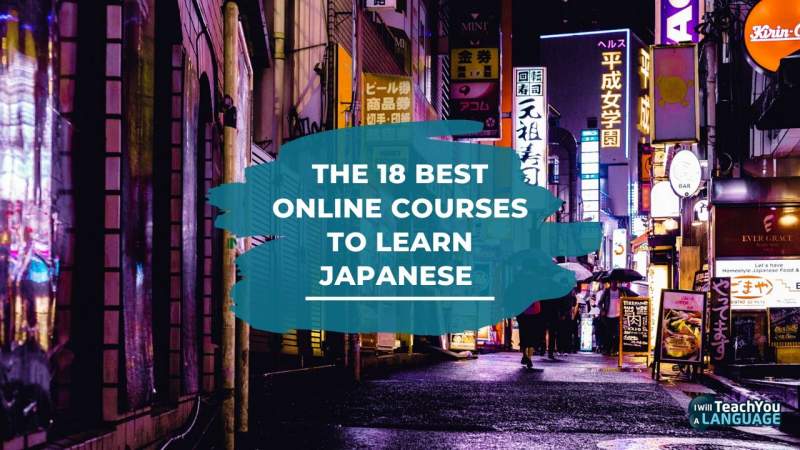
When it comes to learning Japanese, it can be challenging to know how to find the best online Japanese courses.
With online videos and courses promising you’ll be fluent in a month or two, it can be hard to identify which language resources are helpful.
The good news is that thanks to the internet, Japanese online courses are more prevalent than ever before.
The internet offers dozens if not hundreds of options for tackling Japanese. So here are just a few that stand out above the rest as high-quality resources for both new and seasoned language learners.
Table of Contents
18 Best Online Japanese Courses
But before you jump into this list of the best online Japanese courses and helpful tools, take a moment to consider where you’re at in your own Japanese learning journey.
- Are you just starting out and need help with everything from the ground up? Or can you get by with a little Japanese already?
- Is cost a factor for you? Do you need resources that are free? Or are you willing to pay for a quality course?
- Where are you struggling in Japanese? Are you going to need help with Japanese pronunciation, vocabulary, Japanese grammar, or something else? Or maybe even all of the above?
- How much time do you have available to dedicate to learning Japanese? Can you attend a daily course? Or do you need something with more flexibility?
Giving some thought to these questions before you start will ensure that you make an educated decision about which of these best online Japanese courses are going to suit you.
#1 Japanese Uncovered

Japanese Uncovered is my comprehensive online Japanese beginner course that teaches you to speak Japanese through StoryLearning®.
You learn Japanese through a fun and natural method that makes learning a pleasure, and grammar a breeze!
As you'll see, in this post, you'll find various tools, courses and textbooks that can help you with specific aspects of Japanese. Learning kanji for example or online dictionaries.
Japanese Uncovered goes far deeper than many of the other resources on this list. And will give you a very thorough grounding in Japanese.
In fact, it will take you all the way from complete beginner to intermediate level. So you can start conversing and connecting with Japanese speakers.
Do you want to know the secret to mastering Japanese or any language? It's not about how many resources you have on your phone, in your browser or on your bookshelf (that's the hoarding villain at work).
The only way to achieve a high level of Japanese is to immerse yourself in Japanese language! And that's what you do in Uncovered by learning through story from Day 1.
With stories, you can:
- Learn Japanese faster through immersion, instead of rote learning
- Memorise vocabulary more easily, by seeing it in context
- Learn grammar naturally, not through rules!
- Understand Japanese more easily, thanks to lots of reading and listening practice
If you’re ready to get started, click here for a 7-day FREE trial.
#2 Lingodeer

$8.99/month, $19.99 for 3 months, $41.99/year, or lifetime access for $69.99
Unlike many of the most common language learning programs, like Mango, Lingodeer started out specifically with Asian languages.
This means that it’s more equipped to help you with the intricacies that Japanese is going to present, like using kanji and mastering pronunciation that, for many learners, is foreign and challenging to get just right.
You'll find useful cultural tips and notes alongside learning, providing helpful context and an immersive experience that will help to cement the information.
Native speakers provide the audio. And the app is engaging and very easy to use. So you won’t be struggling just to get your lessons done.
However, one of the biggest disadvantages of Lingodeer is its focus on beginners.
While that’s great for, you know, beginner-level learners, Lingodeer can leave something to be desired for intermediate and higher students who have been working with Japanese for a while.
For that reason, it’s not right for everyone. But it’s a great place to get started.
#3 Pimsleur
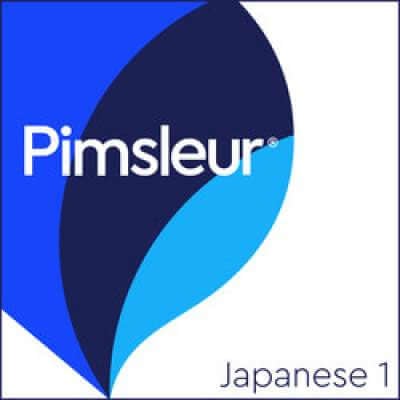
$19.95/month for the basic subscription
If you struggle to learn from reading and need oral instruction in order to grasp concepts in foreign language, Pimsleur might be a great option for you.
Because it’s the premier option for audio resources in Japanese, it’s hard to go wrong with the vast number of lessons this course offers.
Pimsleur knows that audio-oriented learners are its primary audience. So expect to find conveniences like high-quality voice actors, narrators of a variety of genders, ages, and types. And a driving mode so that you can listen and learn while you’re in the car with ease.
Pimsleur’s intense focus on oral language use is both a great advantage. And its greatest downfall as a course.
Because of the fixation on audio, Pimsleur’s lessons are lacking in writing and reading practice. These are important parts of comprehensive and immersive Japanese language learning.
But if you’re just trying to bridge an audio gap that’s lacking in your current plan of study, this may not be such an issue for you.
#4 Wanikani

$9/month, $89/year, or $299/lifetime
Wanikani revolutionized the way that both foreign and native Japanese speakers learn and retain Japanese.
By teaching some of Japanese’s most complicated features—like kanji—using mnemonics, high-quality visuals, and immersive activities, it’s hard to find a resource that will encourage solid understanding and use of kanji like Wanikani.
From fun games to an algorithm that tests you on kanji based on how frequently you get them right and wrong, Wanikani offers unparalleled support in learning the written aspect of Japanese.
Because of the writing-oriented focus of Wanikani, as you may expect, listening comprehension is lacking if this will be your only tool for learning Japanese.
However, because Wanikani focuses on the building blocks of language via not only kanji and radicals but also vocab (that’s been reviewed by real native speakers to compile a database of vocab that is truly useful), this is a solid place to start if you're a newbie. Or if you're working to solidify your knowledge in Japanese.
Lessons build daily. And the algorithm is customised to adapt to you. Though this means that you need to keep up daily in order to reap the greatest benefit from Wanikani.
#5 NHK World
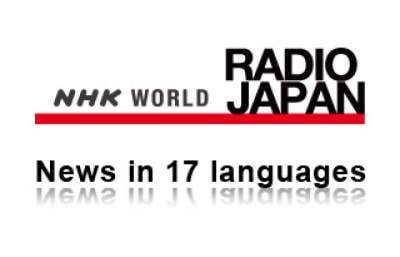
Even among the best online Japanese courses, It can be hard to find an all-around course that covers everything from writing to reading and listening comprehension (apart from Japanese Uncovered!).
Enter NHK World, a comic strip-style resource that’s paired with audio, animated videos, cultural facts, and writing to enable you to practice all facets of the Japanese language.
You can choose to make lessons easier or harder (for example, by disabling subtitles) to suit the level of learning that you’re currently at. And you can download lessons to take with you anywhere you go.
Like Lingodeer, NHK World is catered more toward beginners. So if you’re at an advanced level, you may find NHK just a bit too simple for your needs. However, as an all-around resource, it is a worthwhile option to consider. Plus, because it’s free, it’s at least worth checking out.
#6 Lang-8

While not an online Japanese course directly, it doesn’t get much better than Lang-8 when it comes to one of the most often under-utilised parts of Japanese —actual real conversation.
Lang-8 is an online resource where people from all over the world sign up for language exchanges. For example, a Japanese person who wants to learn English signs up. And helps an English learner who wants to learn Japanese.
They’ll correct the Japanese learner’s Japanese. And the Japanese learner will correct their English. In this way, both people get to learn while contributing to each other as well.
The good news is that unlike many forced conversation classes, where you don't choose your partner, Lang-8 allows anyone to correct your work. And you too may correct the work of anyone you find.
This means that you don't have to work with the same person over and over. It also means that you might make some new friends as you practice! It’s a great way to speak with real people, either via Skype or just via writing. And it’s absolutely free to sign up.
Japanese Dictionaries & Reference Material
#7 Tae Kim’s Guide
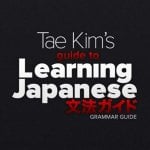
Sometimes, you have no problem learning the vocabulary of a foreign language. But what you struggle with is application. If this sounds like you, Tae Kim’s guide to Japanese might be worth looking into.
Rather than teaching you Japanese in pieces, Tae Kim opts to immerse you in Japanese natively, giving your Japanese phrases, sentences, and interactions to work with.
This will quickly brush you up on teaching yourself. And equip you with the tools you need to turn any encounter in Japanese into a valuable learning experience.
An additional benefit is that Tae Kim’s (very extensive) guide is completely free if you’re using the online web version. So you can take the guide with you wherever you go.
One of the main downsides of Tae Kim’s guide is that it doesn’t have much in the way of audio or visual options. Though some YouTube videos can help to curb that issue.
Still, if you find it hard to learn from reading alone, you may struggle to benefit from Tae Kim despite the massive trove of immersive information.
#8 Denshi Jisho
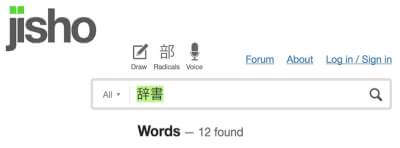
When it comes to dictionaries for the Japanese language, you’ll be hard-pressed to beat the old reliable Denshi Jisho.
This online dictionary comes with a massive amount of assistance, from seeing words used in native sentences to offering the ability to type in both English and Japanese.
Know the English word but not the Japanese? Type in English. Know how to say a Japanese word but don’t know what it means or how to write it? Type it in using English characters. And DJ will suggest which words you might mean.
With an online tool that works with touch-screen phones and tablets, Denshi Jisho allows you to draw kanji that you don’t know using your finger and then helps you find words.
You’ll never have that pesky problem where you don’t know how to look up a word because you don’t know how to read the kanji! And because Denshi Jisho is free, it’s one of the most important resources you’ll encounter in your Japanese language learning journey.
#9 Maggie Sensei

When it comes to seeing example sentences and learning how individual pieces of grammar work, few resources are better than the beloved Maggie Sensei.
An adorable and easy to understand website originally based on a Japanese dog named Maggie, this website is a trove of information from native Japanese speakers about how to use individual pieces of Japanese grammar and syntax, complete with example sentence. And cute animal pictures.
While early lessons featured only Maggie herself, the resource’s popularity exploded. And now Japanese learners from all over the world submit their pet pictures in order to have them used as helpful (and cute) visual aids for grammar examples and patterns.
Naturally, access to Maggie Sensei’s large collection of reference material about Japanese is entirely free. It’s just a website put up by a native speaker who adores animals and helping other people learn Japanese.
Thanks to the addition of the Maggie’s Room feature, you can submit any questions about Japanese to Maggie Sensei (or rather, Maggie Sensei’s owner!), who will be happy to provide clarification.
This offers a personalized and very helpful feature not found in many other of the best online Japanese courses.
#10 Rikaikun

Japanese language learners the world over can attest that Rikaikun is one of the most invaluable and easiest to use language assistants out there.
It’s actually an extension you can add to your browser. And it will enable you to mouse over kanji and see the meaning and reading on any website on the internet.
This broadens your horizons, allowing you access to any Japanese website you can get your hands on. Talk about bumping up your reading comprehension!
Rikaikun is free. And it sits quietly at the top of your browser when not in use. If you find that it’s getting in your way, a quick click will disable it until you’re ready to use it again.
There’s really no reason not to check it out and turn your internet browsing into an easy learning opportunity.
Japanese Podcasts & Audio
#11 Japanese Conversations

Japanese Conversations is my story-based listening material designed for intermediate learners.
The advantage of Conversations is that you get full access to transcripts of the recording, which boosts your comprehension.
Ever found yourself listening to some Japanese, then you get stuck on a word or phrase and, in trying to figure out what it means, you’ve gone and fallen a whole minute behind the conversation?
With transcripts, you’ll be able to more easily recognise what you hear. Everything you need to bump up your Japanese listening skills is in Conversations.
#12 HiikiBiiki

Every Japanese learner needs at least a little bit of listening practice. And many of the best online Japanese courses can find themselves lacking in this area.
For this reason, supplementing with specific audio podcasts is a great option. That’s where HiikiBiiki (often written simply as Hikibiki or HKBK) comes in. Hikibiki is one of the most popular Japanese podcasts out there, and for good reason.
The speakers who are dialoguing on the podcast are good friends. And this comes through in the natural and friendly way in which they speak.
This makes not only for a pleasant listening experience but also an authentic one as well. The speakers cover a wide range of topics—which is great for broad immersive exposure and practice. So you’re likely to find something you’re interested in listening to most of the time.
One of the most recent podcasts touched on Untitled Goose Game. A suddenly popular video game about a whimsical goose wreaking innocent havoc in a small town.
Even little trends like these often make their way into Hikibiki’s podcasts. And this makes them both accessible and very helpful in day-to-day conversation.
Hikibiki’s podcasts are free, which makes them all the better as a tool for continuing to practice Japanese. There’s no reason not to at least try them out and see if they work for you!
#13 Tofugu

Japanese learners the world over have praised the Tofugu podcast system for providing them with engaging and interesting topics to listen to for years.
While some podcasts can wax almost too educational and become dry and hard to listen to, the chemistry between the speakers in Tofugu’s podcasts is audible.
They’re good friends, and their banter often drifts between topics as native speakers typically will. This provides an authentic listening experience full of comedy, learning value, and engaging audio all in one.
Like Hikibiki, Tofugu’s podcasts are completely free. So it’s worth trying them out to see if Koichi and the others are people you enjoy listening to. Tofugu and Hikibiki do cover different topics than each other.
So check both and which one covers more of the information you’re interested in so that you can receive the greatest benefit from listening in.
#14 Slow News in Japanese

If you’ve been disappointed in how much (or rather, how little) podcasts tend to focus on things like news and current events, you’ll be pleased to learn that News in Slow Japanese has your back.
If you’re not finding it helpful to listen to people talk about their lives or about imaginary situations for the sake of learning Japanese, NSJ is a great resource. It not only keeps you in the loop about what’s going on in the world, but also ensures you stay brushed up on your Japanese.
While News in Slow Japanese is exactly what it sounds like. News read in Japanese, but slowly, to facilitate understanding and comprehension. Plus there are actually quite a few additional features that you’ll likely find helpful.
If you use the browser-based version, you’ll have access to an in-built tool that allows you to see the meaning of kanji.
Not only that, but this same mouse-over tool works with entire phrases! So as you listen to the news, you can follow along, looking at the meanings of unfamiliar words in real time.
And for the low, low price of absolutely free, it’s worth taking a look at NSJ to see how it could fit into your Japanese learning regimen.
Japanese Books & Textbooks
#15 Genki
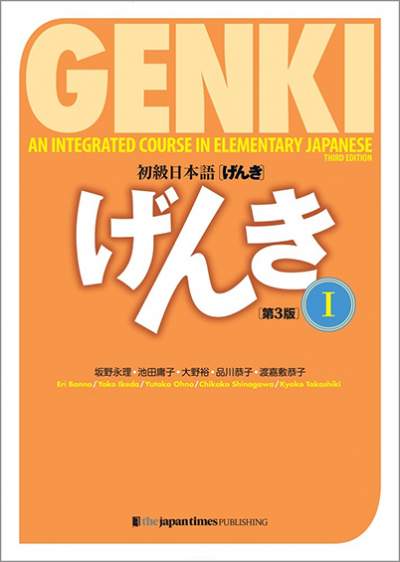
When you’re talking about mainstays in Japanese language education, it’s nearly impossible to miss Genki.
This series of textbooks is the backbone of most Japanese language learners’ early careers. And there’s a reason for that.
Genki provides a comprehensive education in Japanese using a combination of in-text examples, audio files (that come with the book as a CD in the back), and a workbook.
Multiple copies of Genki ranging from beginner to early advanced will take you from your very first encounter with Japanese all the way through becoming mostly functional on a day to day level and at work.
However, the Genki textbooks stop short of the true “advanced” level. So if you're looking to take that final step into fluency and deep comprehension you'll need to move on from Genki to more advanced books.
For this reason, Genki doesn’t work as your sole Japanese learning tool. And the lack of speaking and writing opportunities will leave you needing to supplement your education if you choose Genki as your primary method of learning.
That being said, most heartily recommend Genki as a great place to start when solidifying the basics of Japanese. From there, you can gauge which steps to take next.
Each Genki textbook tends to run around $50, plus the workbook if you’d like it. Consider purchasing these used from local colleges or universities if they have Japanese programs. You might be able to save some money! Similarly, your local library may be able to acquire a copy for you on a textbook loan.
#16 Tobira
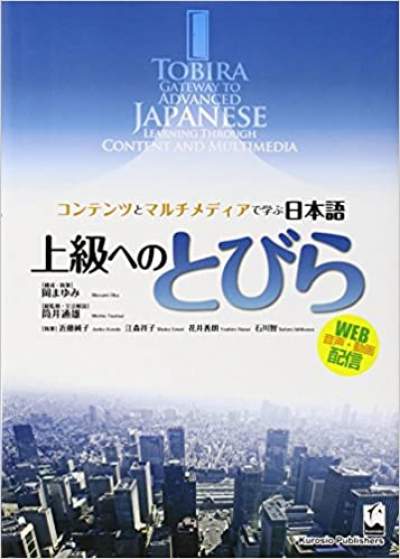
When Genki simply isn’t fulfilling your needs for higher intermediate and advanced Japanese any longer, it’s time to make the switch to Tobira.
While Tobira does offer lower-level Japanese options as well, the typical progression while learning Japanese moves students through Genki at lower levels and into Tobira at the more advanced stage.
This is because Tobira is much more immersive than Genki in that much more of the textbook is in Japanese. You should have a solid grasp of and ability to read kanji at this point. So your learning can take place to a greater degree in native Japanese.
For this reason, Tobira puts in a lot more work than Genki when it comes to offering reading comprehension exercises. However, like many textbooks, Tobira suffers from an overall lack of quality listening practice.
There really is simply no replacement for actively engaging with native speakers. And a podcast supplement alongside Tobira will turn it into an even more valuable resource.
Like Genki, a copy of Tobira is likely to run you about $50. In similar fashion, check with local universities and libraries to see if you can acquire a used copy. You might just find some helpful notes from past learners in those pages!
#17 An Integrated Approach to Intermediate Japanese
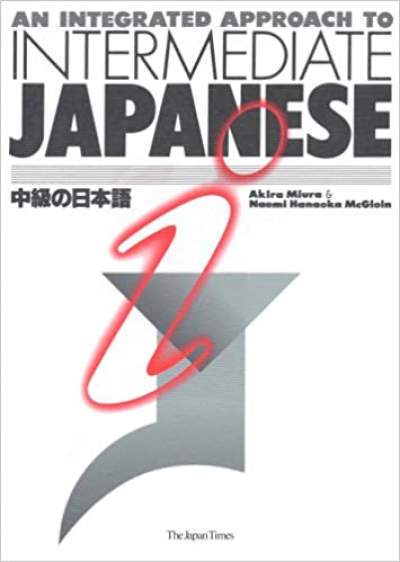
Often called IAIJ or simply Integrated Approach (for probably obvious reasons—that’s a long title), An Integrated Approach to Intermediate Japanese is the stepping stone you may need if you find the transition from Genki to Tobira too steep.
Integrated Approach hangs comfortably at the intermediate level. So if you need further practice with fundamentals without the early basics, you'll find your home here.
The book is known for its gradual and successful climb in difficulty that phases you in gradually, as you’re ready.
However, it’s important to note that unlike Genki, IAIJ does not provide nearly as many exercises. So your study will rely much more on your own initiative in practicing what you’ve learned.
Similarly, because the textbook introduces new vocabulary via reading and theme instead of via a vocab list, it can be challenging to remember new words, as they’re sometimes only tangentially related to the topic at hand.
That being said, Integrated Approach is still a solid choice if you want to beef up you intermediate Japanese skill before heading on to advanced levels.
As expected, IAIJ comes in at about the same price point as other Japanese textbooks: about $50.
#18 Speak And Read Japanese
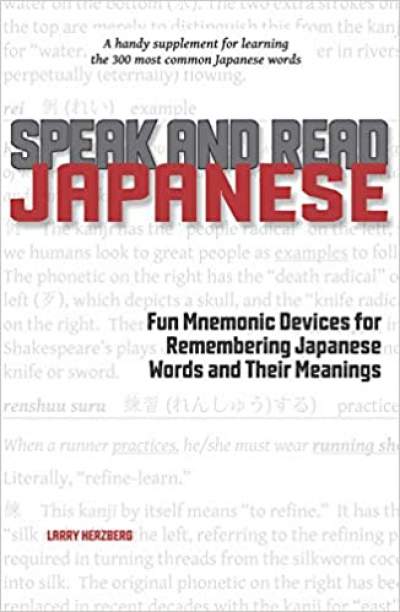
Ever wondered how on earth you’re going to actually learn all those kanji?
One of the most tried and true ways to help commit kanji to memory permanently—instead of just memorising them for a test and then promptly forgetting everything—is by using mnemonics.
In other words, associate the kanji with easy-to-remember images and ideas. And you’ll always be able to remember what they mean and why.
Speak and Read Japanese is a textbook focused solely on providing helpful, catchy, and fun visual cues about what kanji mean and the parts they’re made up of.
For example, ever wonder how to remember the kanji for “bright”? If you knew that it combines “sun” and “moon,” you might be able to guess!
Little tricks like this are the point of Speak and Read. And they’ll help you create mental maps to store your kanji permanently instead of shoving everything together in your brain as just “a bunch of lines.”
Even better yet: Speak and Read is a cheap buy at only $12! It’s worth checking out and seeing how many of the mnemonic devices work for you!
Best Online Japanese Courses FAQ
What Is The Best Website To Learn Japanese On?
Some of the best websites to learn Japanese include WaniKani (for kanji), BunPro (for grammar), LingQ (for immersion-based learning), and Tofugu (for beginner-friendly guides).
NHK Easy Japanese and Tae Kim’s Guide to Japanese Grammar are also excellent free resources.
What Is The Best Japanese Certification?
The Japanese-Language Proficiency Test (JLPT) is the most widely recognized certification, ranging from N5 (beginner) to N1 (advanced).
For business settings, the BJT (Business Japanese Test) is another option. If you're learning for speaking proficiency, the J-Test is also worth considering.
Can I Learn Japanese In 3 Months?
In 3 months, you can learn basic phrases, hiragana, katakana, and some essential grammar, but fluency requires much longer.
Consistent daily study, immersion, and speaking practice can help you reach a survival conversation level (A1-A2) in that time.
Is Duolingo A Valid Way To Learn Japanese?
Duolingo is useful for learning basic vocabulary and sentence structure, but it lacks in-depth grammar explanations and kanji practice.
It works best when combined with other resources like textbooks, immersion, and speaking practice.
Wrapping Up The Best Online Japanese Courses
So there you have it – the 18 best online Japanese courses.
Japanese online courses are a valuable resource for learning Japanese, whether you’re new to the language or a seasoned veteran.
But the biggest influence in how quickly and effectively you learn isn’t going to depend on the cost, size, or facets of even the best online Japanese courses. It’s going to depend on the amount of time and effort you’re willing to dedicate to the language.
Even just a couple minutes every day set aside specifically to learn Japanese will put you leaps and bounds ahead of just fitting it in “when you have a minute.”
Learning a language takes dedication. And committing to immerse yourself in Japanese is going to equip you to use the language effectively and quickly.
And the best way to immerse yourself in Japanese in my book, is to read in Japanese. And that's exactly what you do in my course, Japanese Uncovered, where you learn through story, not rules. Try it free for seven days.

Olly Richards
Creator of the StoryLearning® Method
Olly Richards is a renowned polyglot and language learning expert with over 15 years of experience teaching millions through his innovative StoryLearning® method. He is the creator of StoryLearning, one of the world's largest language learning blogs with 500,000+ monthly readers.
Olly has authored 30+ language learning books and courses, including the bestselling "Short Stories" series published by Teach Yourself.
When not developing new teaching methods, Richards practices what he preaches—he speaks 8 languages fluently and continues learning new ones through his own methodology.









































